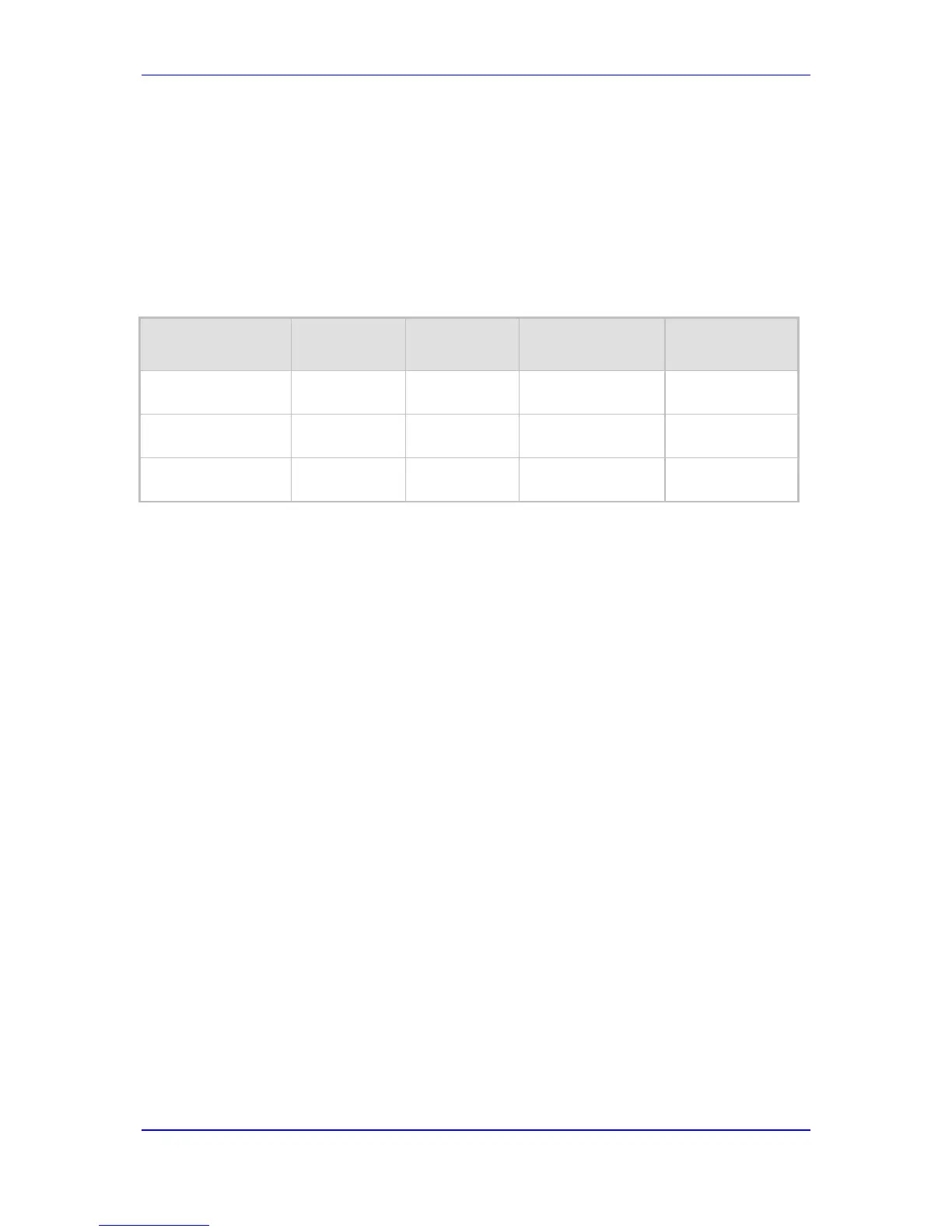Outbound IP Routing Rules: You can configure up to two alternative routing rules in
the table. If the initial, main routing rule destination is unavailable, the device searches
the table (starting from the top) for the next call matching rule (e.g., destination phone
number), and if available attempts to re-route the call to the IP destination configured
for this alternative routing rule. The table below shows an example of alternative
routing where the device uses the first available alternative routing rule to re-route the
initial, unsuccessful Tel-to-IP call destination.
Alternative Routing based on SIP Response Code Example
Destination
Phone Prefix
IP Destination SIP Response Rule Used?
Main Route
40 10.33.45.68
408 Request
Timeout
No
Alternative Route
#1
40 10.33.45.70
486 Busy Here No
Alternative Route
#2
40 10.33.45.72
200 OK Yes
Proxy Sets: Proxy Sets are used for Server-type IP Groups (e.g., an IP PBX) and
define the actual IP destination (IP address or FQDN) of the server. As you can define
up to five IP destinations per Proxy Set, the device supports proxy redundancy, which
works together with the alternative routing feature. If the destination of a routing rule in
the Outbound IP Routing table is an IP Group, the device routes the call to the IP
destination configured for the Proxy Set associated with the IP Group. If the first IP
destination of the Proxy Set is unavailable, the device attempts to re-route the call to
the next proxy destination, and so on until an available IP destination is located. To
enable the Proxy Redundancy feature, set the IsProxyHotSwap parameter to 1 (per
Proxy Set) and set the EnableProxyKeepAlive to 1.
When the Proxy Redundancy feature is enabled, the device continually monitors the
connection with the proxies by using keep-alive messages (SIP OPTIONS). The
device sends these messages every user-defined interval (ProxyKeepAliveTime
parameter). Any response from the proxy, either success (200 OK) or failure (4xx
response) is considered as if the proxy is communicating. If there is no response from
the first (primary) proxy after a user-defined number of re-transmissions (re-INVITEs)
configured using the HotSwapRtx parameter, the device attempts to communicate
(using the same INVITE) with the next configured (redundant) proxy in the list, and so
on until an available redundant proxy is located. The device’s behavior can then be
one of the following, depending on the ProxyRedundancyMode parameter setting:
• The device continues operating with the redundant proxy (now active) until the
next failure occurs, after which it switches to the next redundant proxy. This is
referred to as Parking mode.
• The device always attempts to operate with the primary proxy. In other words, it
switches back to the primary proxy whenever it's available again. This is referred
to as Homing mode.
If none of the proxy servers respond, the device goes over the list again.

